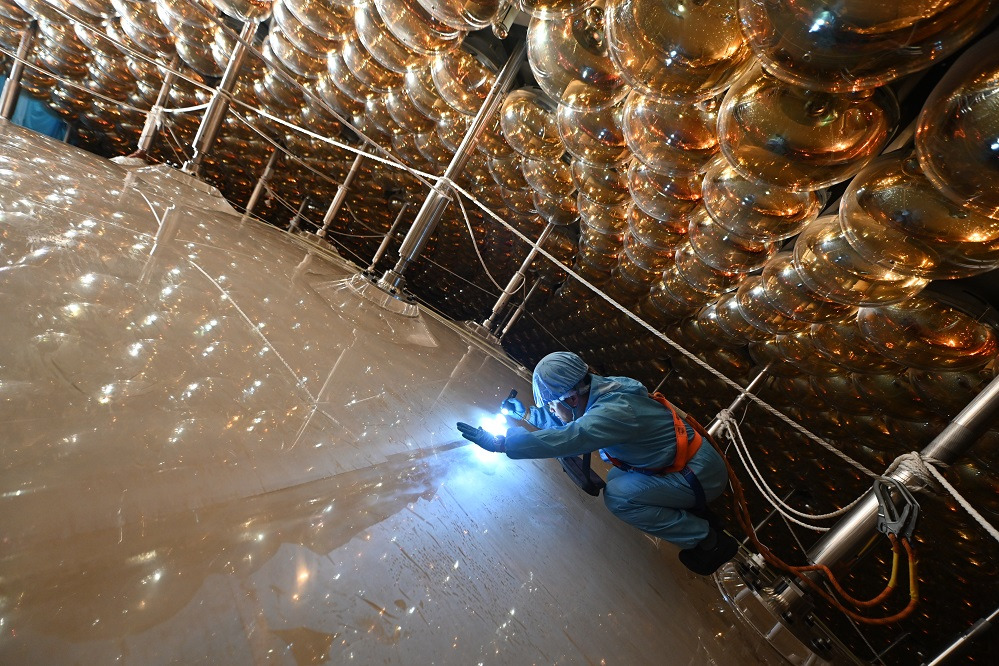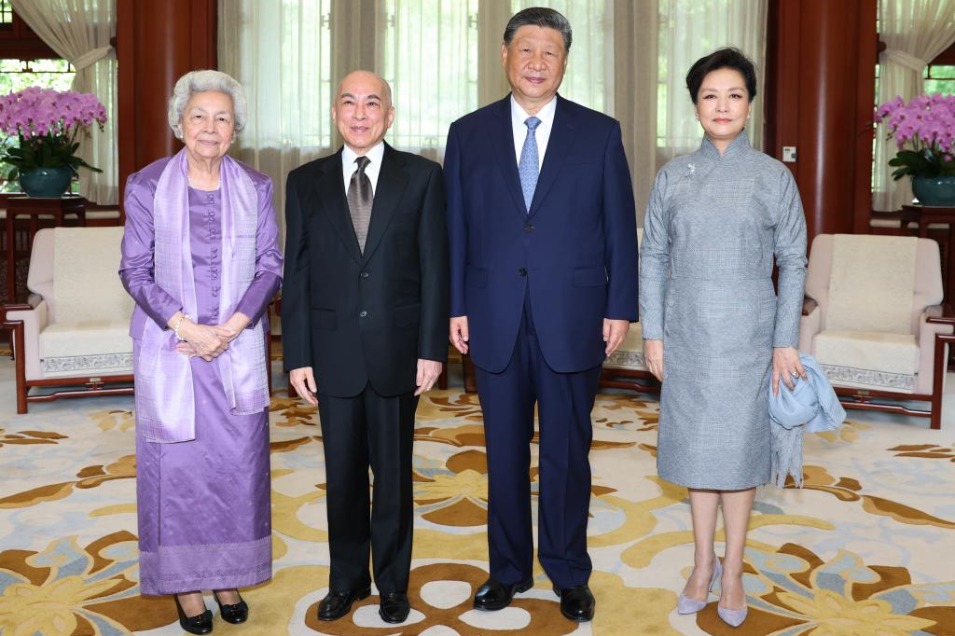Shutterbugs strive to promote dark night tourism

Even though only six astronomy photographers participated in the second session of this year's "Sweet Whispers to the Galaxy" festival held in Hami prefecture, Xinjiang Uygur autonomous region, earlier this month, they are all among the country's best.
Wang Junfeng is known by many stargazing enthusiasts as an "online hot topic maker". Working with China Photo Group, a subsidiary of Xinhua News Agency, the 40-year-old photographer has been taking astronomy photos and promoting stargazing for more than 10 years.
Living in Beijing, he often organizes stargazing activities on the outskirts of the city. Some participants have gone on to become professional astronomy photographers.
Because of his work, Wang is familiar with the country's mass media outlets and is good at turning some small topics into hot ones on Chinese social media.
After Tianhe — the first and central component of Tiangong, China's space station — was launched on April 29, 2021, Wang started looking for the station in the night sky. In June of that year, three Chinese astronauts were sent to Tiangong. On July 4, they conducted China's first spacewalk in 13 years.
Wang checked an app on his mobile phone and found that the space station would pass over Beijing's night sky the same day. He went to a park and used his mobile phones to record Tiangong traveling across the sky. Then he sent his photos and video clips to the People's Daily's Sina Weibo social media account.
"They were then forwarded to the accounts of Xinhua and China Central Television," Wang said. "They instantly became a hit."
The following weekend, he led a group of children stargazing in Beijing and managed to find the space station for them. The People's Daily livestreamed the activity online.
"Over the next three days, my photos or video clips created four hot topics on Chinese social media," he said. "Each garnered more than 100 million hits."
Since then, he regularly visits a park near his home and uses his mobile phones to take photos of the space station. "People soon gather around me and ask me questions," Wang said. "After they learn about what I am doing, they always become excited and happy."
Guiding people to watch the space station has become a "secret weapon" that Wang uses to impress his hosts and promote stargazing in many places. "As an enthusiast, I am truly happy to help more people learn a little bit about astronomy and enjoy stargazing," he said.
Zhou Bo, another member of the country's first group of astronomy photographers, has been friends with Wang for many years.
Together with two other photographers, they founded the China StarVision Alliance, a platform for nearly 1,000 Chinese astronomy photographers and businesses related to dark sky tourism.
"In the beginning, it was just a chatroom for enthusiasts to share their hobby," Zhou said.
These days, the 40-year-old Beijinger works with the CSVA service team and considers it to be a key institution in the promotion of dark sky tourism and a strong contributor to the country's rural vitalization efforts.
In April, the Volunteers Organization for Innovative Country Service, an institution under the Ministry of Civil Affairs, launched "Stars at Hometowns", a program promoting the development of dark sky tourism in the countryside and the need to reduce light pollution. One of the CSVA's founders was appointed as the program manager.
"The vast rural areas of the country are perfect places for the development of dark sky tourism," Zhou said.
"It needs no big financial investment and can bring in sizable profits, because stargazing enthusiasts will remain in a place for a couple of days and buy things there if the place offers decent accommodations and a dark sky with little light pollution."
As a result, the CSVA has cooperated with local governments in more than 20 areas to promote dark sky tourism, including Hami prefecture in Xinjiang.
As a seasoned livestreamer of content related to astronomy, Zhou has a really tight schedule.
After hosting two livestreams of the Perseids meteor shower, he left Hami on the morning of Aug 13.
He arrived in Xining, Qinghai province, the next day after a 16-hour drive and two hours of sleep.
After a daylong meeting in Yushu prefecture, Qinghai, he visited several counties in the next three days to take photos of stars.
Zhou then traveled to Dunhuang, Gansu province, on Aug 18 to attend a tourism festival and returned to Yushu on Aug 21.
On Tuesday, he traveled to a remote valley in Yushu and livestreamed during the annual Qixi Festival, or Chinese Valentine's Day.
In Chinese mythology, the Qixi Festival — the seventh day of the seventh lunar month — celebrates the annual meeting of Niulang, a cow herder, and Zhinu, a weaver.
"I showed my viewers where the Niulang and Zhinu stars are in the galaxy," Zhou said.

Today's Top News
- Xi and his wife meet Cambodian King, Queen Mother
- Xi meets Russian State Duma chairman
- Parade a tribute to Chinese people's sacrifices in WWII
- SCO will strongly uphold multilateralism
- China targets disguised illicit gains
- US 'freedom of navigation' lacks basis






























